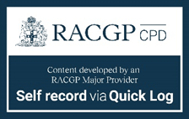Managing acute musculoskeletal conditions from sporting injuries
Read more about how to manage athletes with acute musculoskeletal injuries acquired from sport, including treatment protocols and psychological support.
.jpg)
HealthCert Education
Acute musculoskeletal injuries acquired during sport are a serious concern. These are medical complaints encountered by an athlete during exercise or high-impact sporting activities. Sports-related musculoskeletal conditions can negatively impact the athlete's performance and pose significant health problems and financial losses.
Types of acute sports-related injuries
There is substantial variability in the epidemiology and clinical presentation of acute sport-related musculoskeletal injuries. According to studies, the prevalence of muscle injuries is 20% to 60%, whereas the prevalence of joint injuries is 5% to 60% and tendinopathy is 10% to 50%. Tendinopathy is associated with a genetic history of the condition.
The most prevalent musculoskeletal conditions in athletes are sprains, strains, tendinitis, and muscle injuries. These conditions can develop due to overuse, particularly from repetitive actions. Patients experiencing musculotendinous injuries may feel pain, discomfort, exhaustion, and cramping.
The psychological impact of pain
Pain in athletes is a frequent complaint that can occur as a result of injury or overtraining. It hinders the athlete’s continued participation in competition and training. Pain has a bidirectional relationship with psychological factors such as depression, somatic anxiety, and stress.
Understanding negative psychological factors and their association with pain is crucial for healthcare professionals working in sports medicine. Pain can significantly affect the patient’s cognition, behavioural response, and approach towards training.
Acute musculoskeletal conditions
Acute musculoskeletal conditions fall under two categories:
- Acute injury: A sudden blow, twist, fall, overstretch or overuse of a single joint and its surrounding muscles.
- Chronic injury: Abnormal biomechanical strain and stress on a limb/joint for a prolonged period.
The common sites where most injuries occur are the shoulder, jaw, elbow, ankle, knee and phalanges. Injuries can include shoulder subluxation, dislocation, Bankart Tear, TMJ dysfunction, Achilles tendinopathy, ACL injury, meniscal injury, collateral ligament injury, runners knee, ankle sprain (eversion/inversion), lateral and medial tendonitis/epicondylitis.
Treatment protocols for acute musculoskeletal conditions
Acute sports injuries are usually managed by following the RICE protocol (rest, ice, compression, elevation), followed by the MEAT protocol (movement, exercise, analgesic, treatment).
The pharmacological treatment includes NSAIDs, Cryogel, pain relieving ointments, and muscle relaxants. NSAIDS are recommended during the fracture healing stage. However, it is worth being cautious of opioid overdosage and dependency; to eliminate this risk, multimodal analgesic treatment may be prescribed. It includes NSAIDS, regional anaesthetics, opioids, non-opioid analgesics, corticosteroids, psychotherapy, and physiotherapy.
For a myriad of sports-related musculoskeletal disorders, physical therapy is the preferred conservative treatment option. The administration of physical agents, electrotherapy, and exercise therapy alleviates pain and reduces severity.
Along with this, patient education is a critical component of athlete training. Teaching the patient the fundamentals of correct exercise form and body mechanics can help reduce the occurrence of injuries.
Psychological counselling is a crucial aspect of treating the musculoskeletal condition for sports athletes. Cognitive behavioural therapy combined with physical therapy can provide a good prognosis and an early return to sports activity following injury.
- Dr Humda, Physiotherapist
Learn more about this topic in the HealthCert Professional Diploma program in Musculoskeletal & Sports Medicine - fully online or with optional practical workshops.
Engaging with this blog can help meet your annual
|
|
If you consume educational webinars, podcasts, articles, or research on this blog, you can Quick Log CPD hours with the RACGP via the usual self-submission process. You will be asked to reflect on what you have learned, and you will require supporting evidence such as a screenshot. |

 1800 867 1390
1800 867 1390

-1.jpg)
-1.jpg)
.jpg)



